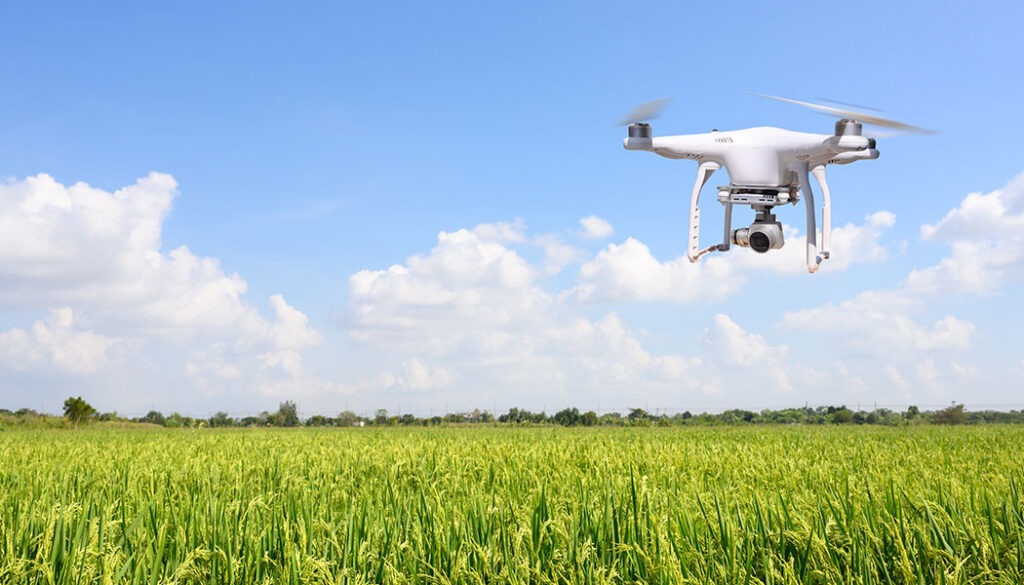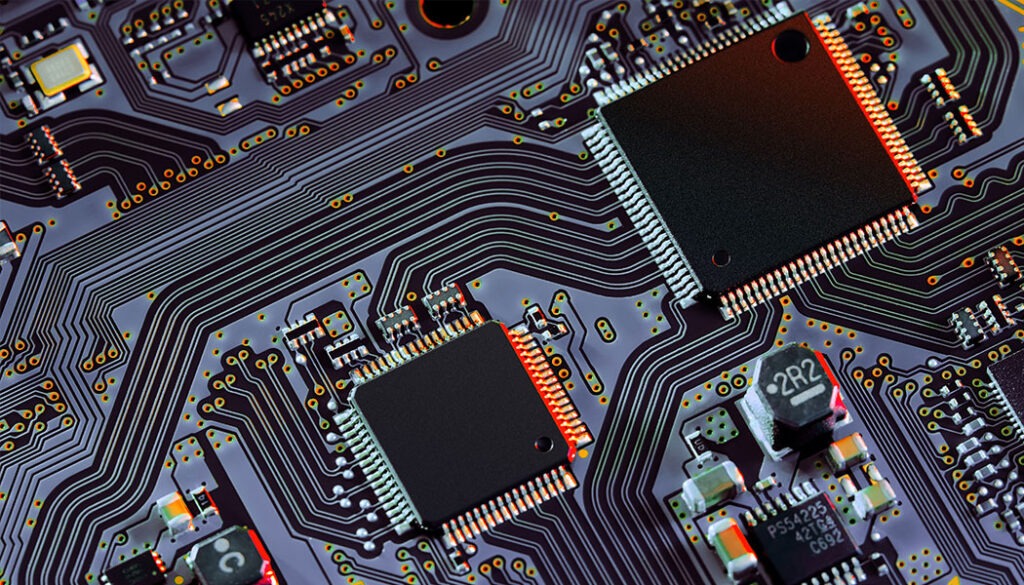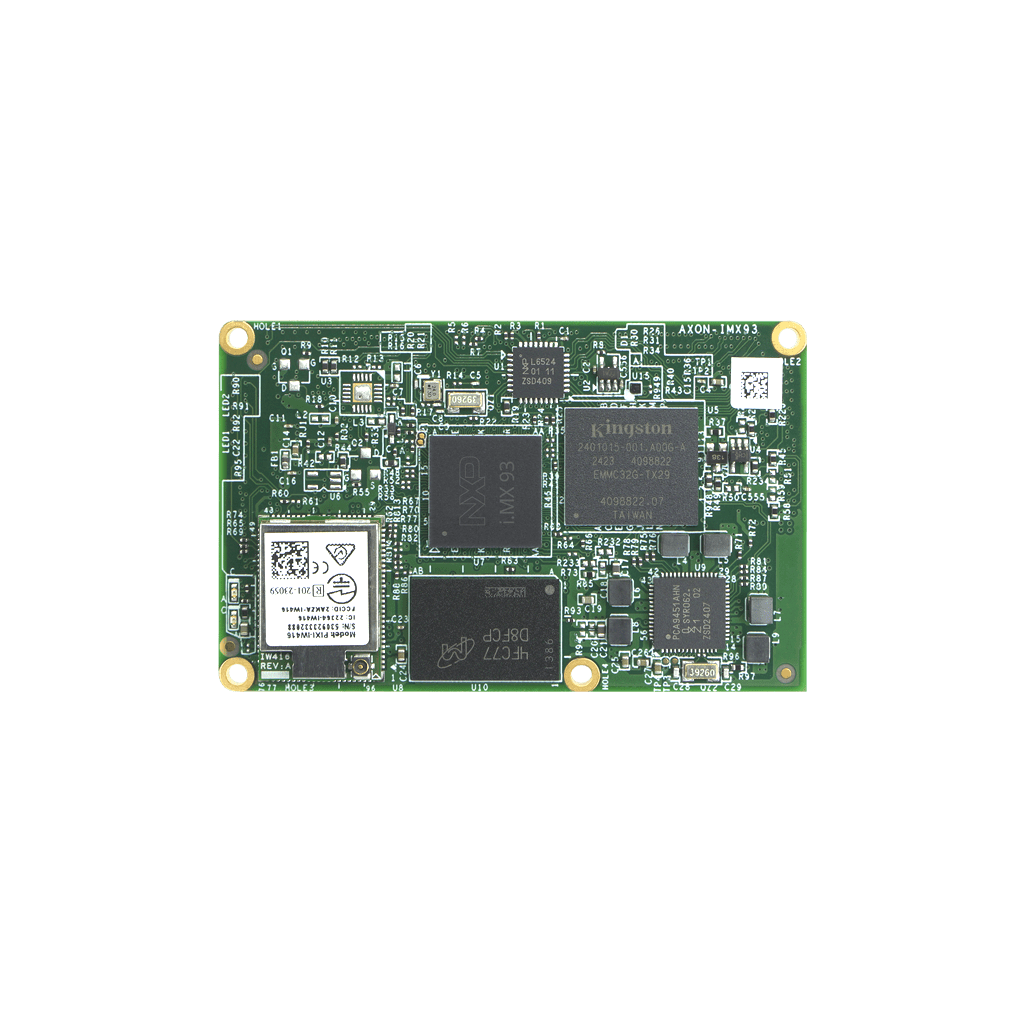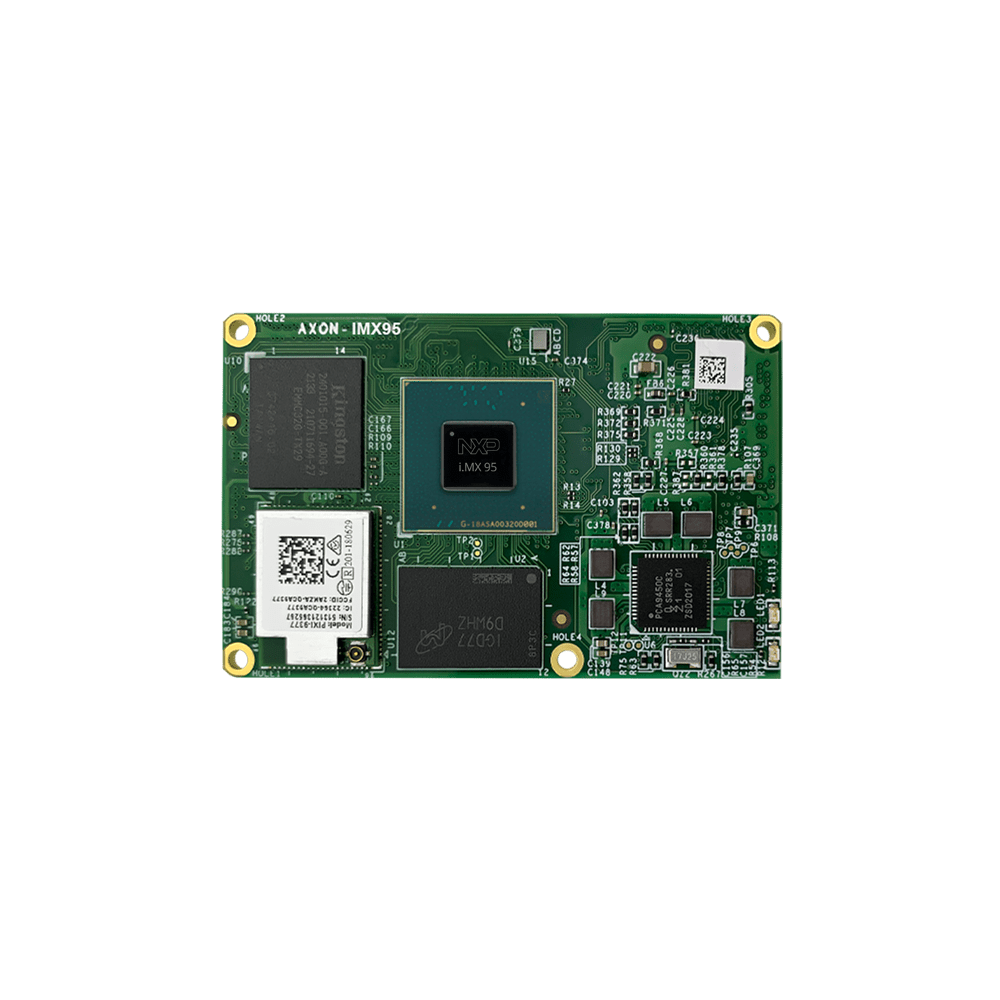Unmanned Aerial Vehicles (UAVs), more commonly known as drones, have become increasingly common in various industries—from agriculture and logistics to defense and entertainment. These flying machines are no longer limited to just hobbyists. They now perform crucial tasks like delivering packages, surveying land, and even assisting in search-and-rescue missions.
But what makes these drones fly, navigate, and complete their missions with such precision?
Behind the scenes, it all comes down to the technology powering them—their system architecture. Traditionally, drones rely on two separate systems: one that controls the actual flying, and another that handles the mission tasks, like processing video from onboard cameras or communicating with a ground station.

However, with advancements in technology, there’s a shift towards integrating everything into a single, high-performance chip known as a System on Chip (SoC).
In this article, we’ll explore how UAV system architecture is evolving. We will have a special focus on how SoCs are changing the game for UAVs, and what this means for the future of drones.
Understanding Traditional UAV System Architecture
Drones, or UAVs, are complex machines, but their core systems can be broken down into two primary parts: the Flight Management Unit (FMU) and the Mission Computer.
Flight Management Unit (FMU)
At the heart of most drones is the Flight Management Unit (FMU). This is the system that keeps the drone flying smoothly. The FMU works in real-time, constantly adjusting the drone’s movements to ensure it stays stable and follows the pilot’s commands. It handles the drone’s altitude, speed, and direction, like how a pilot would manage an aircraft.
The FMU communicates with the drone’s sensors, like the Inertial Measurement Unit (IMU), which detects movement and helps the FMU make the necessary flight adjustments. In short, the FMU is responsible for keeping the drone in the air, responding to commands from the operator, and following the desired flight path.
Mission Computer
While the FMU manages the flight, the Mission Computer takes care of the actual tasks the drone needs to complete. Think of it as the drone’s brain. This computer can process data from cameras, depth sensors, or LiDAR systems. This allows the drone to do more sophisticated work such as collision avoidance or navigating autonomously.
The mission computer also handles most communication with the ground station. It can receive commands or send back data, such as live video feeds or flight status, which the pilot or control team can monitor.
Separate Systems, More Complexity
In the traditional UAV architecture, the FMU and mission computer are separate systems. They work together, but they communicate through specific interfaces, like UART or Ethernet. While this setup works, it adds complexity and introduces some inefficiencies. Each system has its own processor, meaning extra hardware and potential lag between real-time control and mission processing.
This is where advancements in technology, like multicore SoCs, are making a big difference, offering a way to streamline these systems into a more efficient, integrated architecture.
The Advent of Heterogeneous Multicore SoCs in UAVs
The introduction of heterogeneous multicore System on Chips (SoCs) is changing the way drones are designed and operated. Here’s a look in detail.
What is a Heterogeneous Multicore SoC?

A System on Chip (SoC) is essentially a tiny computer packed into a single chip. It contains multiple processing units (or cores) that handle different types of tasks, such as controlling the drone’s flight, processing video data, or running AI models. Unlike older systems that require separate processors for different tasks, heterogeneous multicore SoCs combine everything into one unit.
The term “heterogeneous” refers to the fact that these SoCs contain different types of processors (for example, high-performance CPUs for general tasks, high-speed MCUs for real-time control tasks, GPUs for graphics or video, and AI accelerators for machine learning tasks). These processors can work together efficiently. This enables the drone to manage everything from flight control to mission execution with greater speed and accuracy.
A Unified Solution for UAVs
One of the biggest advantages of multicore SoCs is their ability to bring all the critical tasks of a drone under one roof. Instead of having two or more separate systems (like the FMU and mission computer), a multicore SoC can handle everything on a single chip. This not only reduces the number of components needed but also improves communication between the different functions of the drone.
For example, real-time flight control, which requires fast and precise adjustments, can now be processed on the same SoC that’s handling complex tasks like video processing or AI-based object detection. This makes the drone more responsive and eliminates the lag caused by having to transfer data between separate systems.
Benefits of Multicore SoCs for UAVs
Multicore SoCs offer several advantages for UAVs that significantly enhance their operation. These include:
Reduced Complexity
Traditional UAV architectures involve multiple components that need to communicate with each other. This requires additional wiring, communication interfaces, and synchronization between systems, which adds complexity and potential points of failure. By integrating everything into a single SoC, the drone’s design becomes simpler. This reduces not only the hardware complexity but also the software that’s needed to manage these different systems.
Improved Efficiency and Performance
With all the processing happening within one chip, multicore SoCs offer better performance. The different cores can handle their tasks simultaneously, leading to faster decision-making and more efficient flight management. This is especially important for applications like autonomous navigation, where the drone needs to process large amounts of sensor data and make real-time adjustments quickly.
In the past, separate systems caused delays in communication, which could impact the drone’s responsiveness. Now, with an integrated SoC, flight control and mission-related tasks are handled seamlessly, making the drone more agile and precise.
Lower Power Consumption
Drones need to balance performance with power efficiency, especially for longer flights. Multicore SoCs are designed to be energy-efficient by sharing resources and optimizing processing power. By eliminating the need for multiple processors, drones can use less power, which is crucial for extending battery life and flight duration.
Cost-Effective Design
Integrating all functions into a single SoC reduces the need for multiple expensive components. This lowers production costs for drone manufacturers and simplifies the design process. Additionally, fewer components mean fewer things that can go wrong, reducing maintenance costs in the long run.
Enhanced Scalability
Multicore SoCs make it easier to scale drone capabilities. For example, adding more advanced sensors or upgrading AI algorithms is simpler because the SoC can handle new tasks without needing a complete system redesign. Manufacturers can create a range of drones with different levels of capability by using the same SoC but configuring it differently based on the drone’s intended use.
Applications of Multicore SoCs in UAVs
Here are some key applications where multicore SoCs are transforming the functionality of UAVs:
Advanced Autonomous Navigation
One of the most significant advantages multicore SoCs offer is their ability to handle complex, autonomous navigation tasks in real time. Traditionally, drones required separate systems to process data from cameras, GPS, and other sensors for navigation. With a multicore SoC, all of this can be managed on a single chip, enabling drones to navigate independently and avoid obstacles without human intervention.
In agriculture, for example, drones can autonomously map large areas of land, analyze crop health, and even adjust their flight paths based on real-time data from onboard cameras and sensors. The SoC’s ability to process this information instantly allows the drone to make quick decisions, such as flying around a tree or avoiding a power line.
AI-Driven Object Detection and Tracking
Multicore SoCs equipped with AI accelerators can perform advanced tasks like object detection, facial recognition, and person-following. This is especially useful in areas like surveillance, search-and-rescue missions, and industrial inspections. The SoC allows the drone to process camera feeds in real time, run AI algorithms to detect specific objects or people, and adjust its course based on this information.
For example, in search-and-rescue operations, drones equipped with multicore SoCs can scan large areas and use AI to identify people in distress, even in difficult terrain. The SoC processes the video feed from the drone’s cameras, detects the person, and instructs the drone to follow or zoom in, helping rescuers locate individuals faster and more accurately.
Real-Time Vision Processing
Multicore SoCs are capable of processing high-definition video and images from multiple onboard cameras. This is critical for applications that require a real-time view of the drone’s environment, such as in cinematography, surveying, or industrial inspections.
In industrial inspections, these drones can process video streams to detect faults or damage in structures like pipelines or power lines. By processing the visual data instantly, drones can highlight problem areas in real time. This reduces the need for manual analysis, thereby speeding up the inspection process.
Sensor Fusion and Data Processing
Modern drones often use a range of sensors, from LiDAR and infrared cameras to GPS and ultrasonic sensors, to collect data about their surroundings. Multicore SoCs allow for sensor fusion, which means they can combine data from multiple sensors to create a more comprehensive picture of the environment.
For instance, in precision agriculture, drones can fuse data from infrared cameras (for crop health monitoring) with GPS data to create detailed maps of fields, showing farmers which areas need attention. The SoC’s processing power allows the drone to combine this data in real time. This results in actionable insights while the drone is still in flight.
Enhanced Communication Systems
Multicore SoCs often include integrated communication systems, allowing drones to maintain seamless connections with ground stations, other drones, or IoT devices. This is critical in applications where data needs to be transferred quickly, such as live video streaming, mission updates, or fleet coordination.
For example, in logistics, drones can communicate with each other to form delivery networks. Each drone is equipped with a multicore SoC that processes data from other drones in the fleet. This ensures that packages are delivered efficiently and on time. Additionally, ground communication systems can receive real-time updates, allowing for better tracking and mission adjustments.
Multi-Mission Capabilities
With the processing power provided by multicore SoCs, drones can handle multiple missions simultaneously. For example, a drone can carry out an aerial survey while simultaneously collecting environmental data, or deliver a package while monitoring air quality. The ability to process different tasks in parallel opens up new possibilities for multitasking, increasing the efficiency and functionality of the UAV.
The Future of UAV System Architecture
The current trend toward consolidating multiple subsystems into a single SoC is just the beginning. Here’s a glimpse into what the future holds for UAV technology:
AI and Machine Learning at the Core
AI and machine learning will play a central role in future UAV systems, enabling drones to learn from their environments and improve their decision-making abilities over time. Future SoCs will feature AI accelerators capable of processing massive amounts of data in real time, allowing drones to adapt to changing conditions, optimize routes, and perform complex tasks with minimal human intervention.
Swarm and Cooperative Autonomy
Swarm intelligence, where multiple drones work together to complete missions, is another key area of development. Future UAV systems will feature SoCs that enable drones to communicate and collaborate in real time. This will make group tasks like search-and-rescue operations, agricultural surveys, or coordinated deliveries more efficient and accurate.
Challenges to Overcome
While the future looks promising, there are still challenges to address. Heat dissipation remains a key concern as SoCs become more powerful. Integrating these advanced SoCs into legacy systems can also be difficult. Additionally, as UAVs become more autonomous and complex, security will need to be a top priority to prevent unauthorized access and ensure safe operations. Overcoming these obstacles will be essential for realizing the full potential of UAVs and multicore SoC technology.
Wrapping Up
Multicore SoCs are redefining UAV system architecture by integrating flight control, mission processing, and AI-driven tasks into a single, efficient platform. These SoCs simplify drone design, enhance performance, and reduce power consumption, making UAVs more capable and versatile across various industries. As AI, machine learning, and swarm intelligence become more prevalent, future UAVs will exhibit even greater autonomy and functionality.
TechNexion’s System-on-Modules (SoMs) provide powerful, flexible platforms ideal for UAV applications. These modules integrate multicore processing, AI acceleration, and advanced I/O capabilities, enabling drones to handle flight control, real-time data processing, and AI-driven tasks like object detection and autonomous navigation.
With their compact form factor and scalability, TechNexion SoMs are perfect for UAVs needing high performance and energy efficiency. To know more about how TechNexion’s System-on-Modules can enhance UAV performance and streamline system design, contact us.
Related Products
Get a Quote
Fill out the details below and one of our representatives will contact you shortly.



